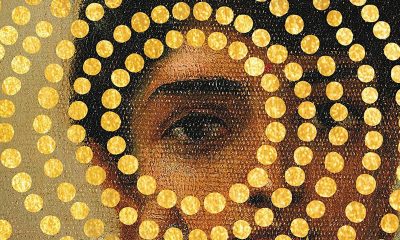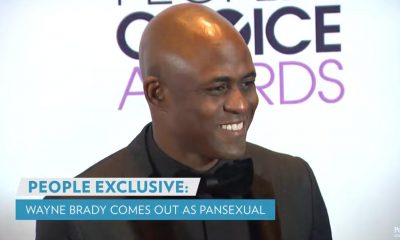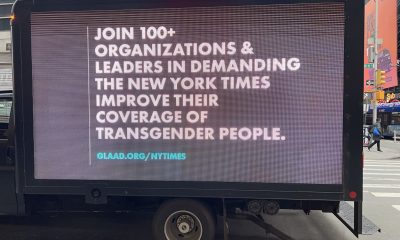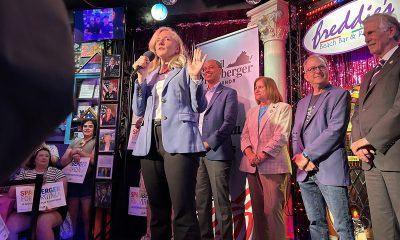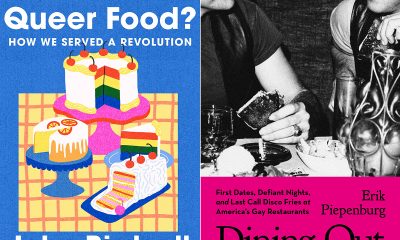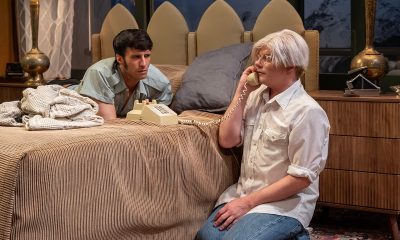Books
YEAR IN REVIEW 2016: Books
Haunting Dust Bowl novel by Annie Bell among year’s best books
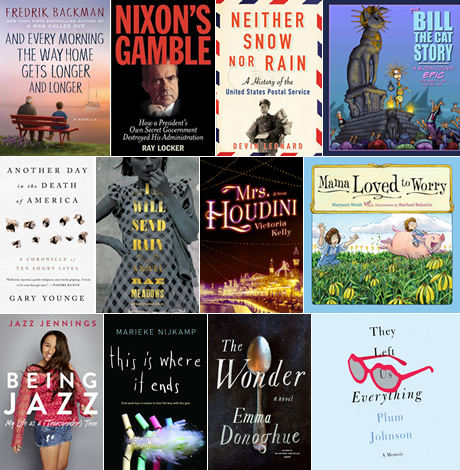
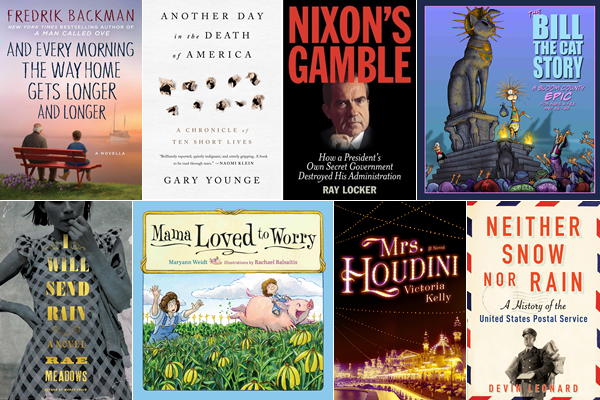 I’m not sure why, but I couldn’t stop touching “I Will Send Rain” by Rae Meadows when I first got it. The cover pulled at me, but the story? Oh my, it’s the tale of a family of four during the Dust Bowl years. The mother, Annie Bell, is trying desperately to hold her family together while her daughter dreams a dangerous dream, her son is mute and her husband slowly goes mad. There’s a surprise in here, a fifth main character, and that’s the dust. Do. Not. Miss. This. Book.
I’m not sure why, but I couldn’t stop touching “I Will Send Rain” by Rae Meadows when I first got it. The cover pulled at me, but the story? Oh my, it’s the tale of a family of four during the Dust Bowl years. The mother, Annie Bell, is trying desperately to hold her family together while her daughter dreams a dangerous dream, her son is mute and her husband slowly goes mad. There’s a surprise in here, a fifth main character, and that’s the dust. Do. Not. Miss. This. Book.
Not normally a big fan of fictionalized biographies, “Mrs. Houdini” by Victoria Kelly nonetheless captivated me with its magic. It’s a tale of love and illusion, believing, trust, and it includes a gauzy ending that might seem implausible but who knows? Hint: if you can bear it, save your gift card. This book comes out in paperback in March.
Generally speaking, I’ll read anything by out author Emma Donoghue. She has a way of turning a tiny, true event into a novel that sticks in your head and “The Wonder” is no exception. It’s the story of a very confident, almost haughty nurse who served with Florence Nightingale and seems to think that stint confers some sort of specialness. When she’s hired to watch a child who claims not to eat or drink, the nurse thinks the girl is a scammer, but, of course, there’s so much more to the story and an ending that’s so perfect, it’s stunning. Write this title down. It’s another book you can’t miss.
A vision of the apocalypse is at root in “The Fireman” by Joe Hill. It’s a novel about a virus that’s infected the world, and if you catch it, you burn. Poof, up in flames, and it’s pitting neighbor against neighbor and husband against wife. There’s a surprising romance in this book, thrills, a chase, humor and horror, and here’s a hint: there are shades of Hill’s father in here. Guess who?
For my fifth pick, I debated: “Britt-Marie Was Here” or “And Every Morning the Way Home Gets Longer and Longer,” both by Fredrik Backman? I finally decided on the latter, the story of life and loss, forgetting and trying hard not to. But here’s the thing to know: the first go-around won’t make much sense. Turn around and read it again — it’s really short, so no problem — and bring tissues that time. It’s truly a lovely book.
Hint: “Britt-Marie” is a close, very close second-pick.
NONFICTION
As I was looking over the list of things I read, I was surprised to remember how much I enjoyed “Neither Snow nor Rain” by Devin Leonard. Overall, this book is about the U.S. Postal Service and its history. The thing that makes this book so much fun, though, is that Leonard also includes so many side stories that it becomes more of a general history that’s light and fun. Fans of Bill Bryson, take note and find this book.
Another something that’s informative and a little on the light side is “Playing Dead” by Elizabeth Greenwood. I mean, how many times a week does the average person wish they could chuck it all and disappear somewhere? Greenwood looks into that: how it’s done, what it’s like and the impacts it has on loved ones. You might change your mind. Or you might want to disappear even more. Either way, this is a can’t miss.
As a Baby Boomer, “They Left Us Everything” by Plum Johnson particularly resonated with me, which is why it really has to be on this list. Johnson’s parents were both elderly and had lived in their oversized house for decades. When they died in relatively fast succesion, Johnson and her brothers were tasked with cleaning up, but not just the house. They also had memories to examine and scrub. This is a book for daughters, particularly, but also for anyone who’s facing the downsizing of a home or end-of-life caretaking.
In a political year, you might guess that an abundance of political books might be published, and you’d be right. My pick for the best in that category is “Nixon’s Gamble” by Ray Locker, who takes a brief look at Nixon’s early career before digging into the moves that the President made, starting on the day of his inauguration. Even if you think you know what happened nearly half a century ago, you don’t. For history lovers of any age or place, this is an eye-opener.
I don’t think I would have liked “Another Day in the Death of America” by Gary Younge quite as much if it had been laser-focused. Nope, Younge took one random day in recent years, and he writes about the 10 children who died of gunshot wounds in the U.S. on that day. It’s that randomness that’s so shocking, especially when you consider the statistic he cites: an average of seven children die by gun every day in America. The circumstances Younge found make this book even more impactful.
CHILDREN’S/YOUNG ADULT BOOKS
Putting “The Bill the Cat Story” by Berkley Breathed on the kids best of list might be cheating a little because this book is only partly something for kids. True, the kiddoes will love the illustrations and older children might laugh at the storyline, but this book is every bit for adults as it is for the younger set. Grown-ups will love the message inside this book; fans of Breathed’s “Bloom County” will appreciate knowing about Binkley’s first days with Bill, and the insider peek at Opus’ home. I don’t say this lightly: it’s a book for the whole family.
I’m not sure if I was ready for its light breeziness, but “Being Jazz” by Jazz Jennings was the right book at the right time when I read it last summer. You might have seen Jennings on the news; as a transgender teen, she’s become somewhat of a spokesperson for trans rights and acceptance. Her book is gossipy, bubbly and truthful — she proactively answers questions that teens want to know, without embarrassment. Hint: this is a great book for adults, too.
Another book that caught me by surprise (because I loved it so much) was “Mama Loved to Worry” by Maryann Weidt, illustrated by Rachael Balsaitis. In the same vein as the Pecos Bill, Slue-Foot Sue and Paul Bunyan stories you loved as a kid, this is a book set on a farm, with a Mama whose tasks grow larger in both action and in fable. The pictures are as much fun as the story, and you’ll love it just as much as does your child, especially when it’s read aloud.
There’s a lot of cleverness inside “The Night Parade” by Kathryn Tanquary — enough to keep a lover of darkness up all night. It’s the story of a Japanese-American girl who tries to fit in with the “in” crowd by disrespecting her ancestors, and yes, her actions have scary repercussions. Older middle schoolers not prone to nightmares will love this, as will younger young adults who are just stepping into this genre. Hint: save your gift cards. This book comes out in paperback in January.
And finally, “This is Where It Ends” by Marieke Nijkamp is a chillingly unexpected tale of a school shooting and heroism, with realism and timeliness that will shock you. That’s not counting the story itself, told in minute-by-minute increments that will make you forget you’re not reading a real account of a tragedy. Again, this isn’t just a YA book. It’s something adults should also want to read.
Books
Two new books on dining out LGBTQ-style
Visit nightclubs, hamburger joints, and a bathhouse that feeds customers
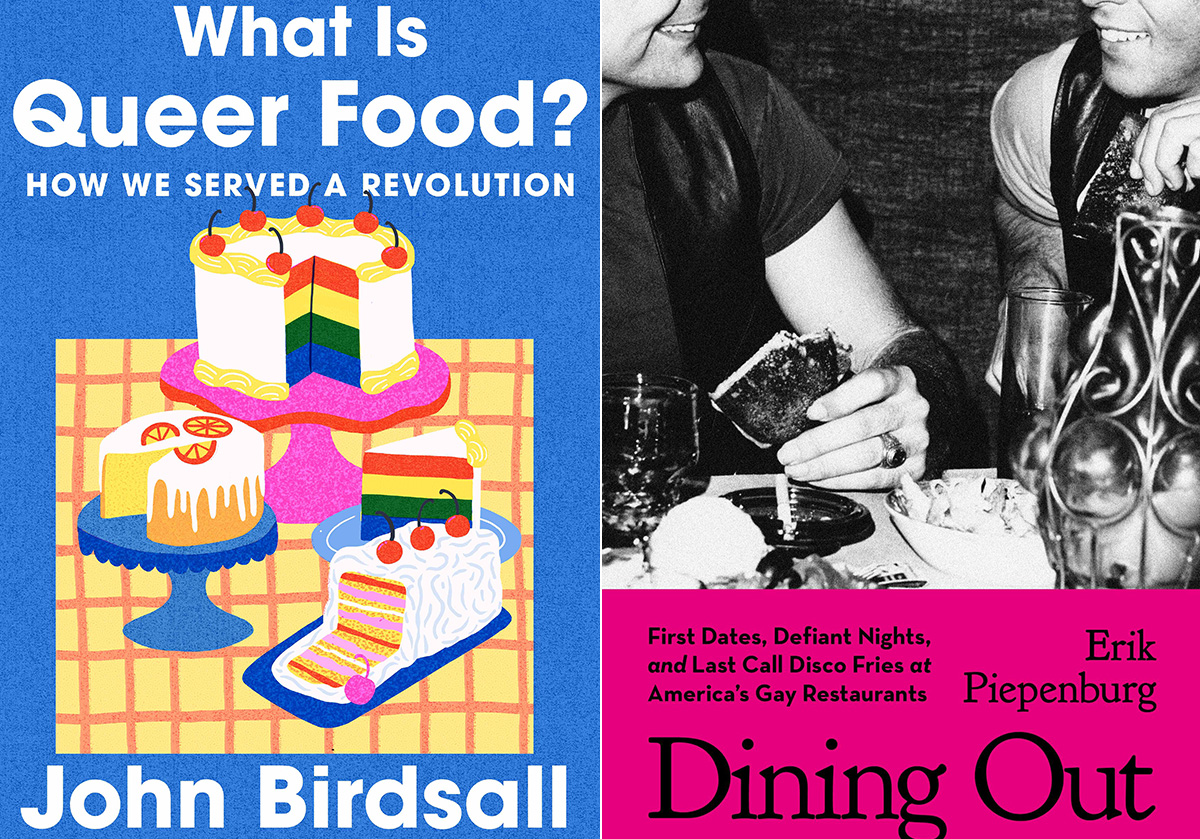
‘What is Queer Food? How We Served a Revolution’
By John Birdsall
c.2025, W.W. Norton
$29.99/304 pages
‘Dining Out: First Dates, Defiant Nights, and Last Call Disco Fries at America’s Gay Restaurants’
By Erik Piepenburg
c.2025, Grand Central
$30/352 pages
You thought a long time about who sits where.
Compatibility is key for a good dinner party, so place cards were the first consideration; you have at least one left-hander on your guest list, and you figured his comfort into your seating chart. You want the conversation to flow, which is music to your ears. And you did a good job but, as you’ll see with these two great books on dining LGBTQ-style, it’s sometimes not who sits where, but whose recipes were used.
When you first pick up “What is Queer Food?” by John Birdsall, you might miss the subtitle: “How We Served a Revolution.” It’s that second part that’s important.

Starting with a basic gay and lesbian history of America, Birdsall shows how influential and (in)famous 20th century queer folk set aside the cruelty and discrimination they received, in order to live their lives. They couldn’t speak about those things, he says, but they “sat down together” and they ate.
That suggested “a queer common purpose,” says Birdsall. “This is how who we are, dahling, This is how we feed our own. This is how we stay alive.”
Readers who love to cook, bake or entertain, collect cookbooks, or use a fork will want this book. Its stories are nicely served, they’re addicting, and they may send you in search of cookbooks you didn’t know existed.
Sometimes, though, you don’t want to be stuck in the kitchen, you want someone else to bring the grub. “Dining Out” by Erik Piepenburg is an often-nostalgic, lively look at LGBTQ-friendly places to grab a meal – both now and in the past.

In his introduction, Piepenburg admits that he’s a journalist, “not a historian or an academic,” which colors this book, but not negatively. Indeed, his journeys to “gay restaurants” – even his generous and wide-ranging definitions of the term – happily influence how he presents his narrative about eateries and other establishments that have fed protesters, nourished budding romances, and offered audacious inclusion.
Here, there are modern tales of drag lunches and lesbian-friendly automats that offered “cheap food” nearly a century ago. You’ll visit nightclubs, hamburger joints, and a bathhouse that feeds customers on holidays. Stepping back, you’ll read about AIDS activism at gay-friendly establishments, and mostly gay neighborhood watering holes. Go underground at a basement bar; keep tripping and meet proprietors, managers, customers and performers. Then take a peek into the future, as Piepenburg sees it.
The locales profiled in “Dining Out” may surprise you because of where they can be found; some of the hot-spots practically beg for a road trip.
After reading this book, you’ll feel welcome at any of them.
If these books don’t shed enough light on queer food, then head to your favorite bookstore or library and ask for help finding more. The booksellers and librarians there will put cookbooks and history books directly in your hands, and they’ll help you find more on the history and culture of the food you eat. Grab them and you’ll agree, they’re pretty tasty reads.
The Blade may receive commissions from qualifying purchases made via this post.
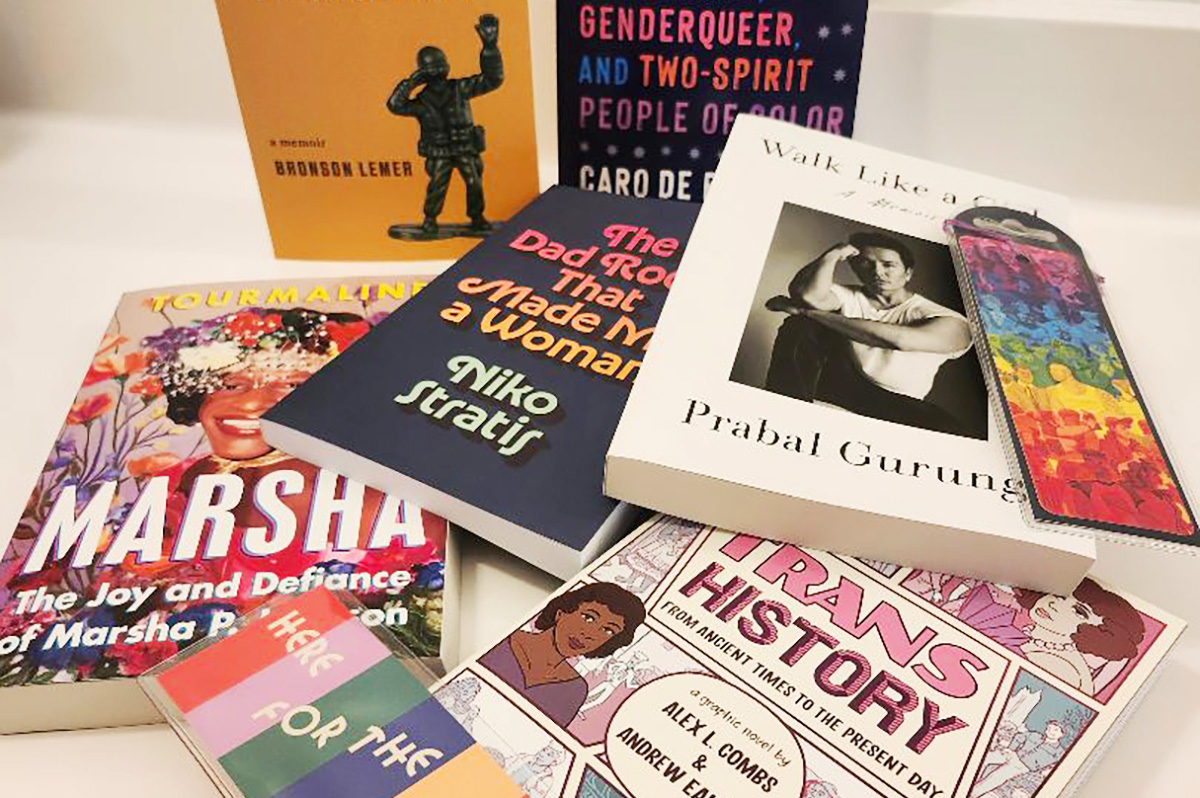
You’re going to be on your feet a lot this month.
Marching in parades, dancing in the streets, standing up for people in your community. But you’re also likely to have some time to rest and reflect – and with these great new books, to read.
First, dip into a biography with “Marsha: The Joy and Defiance of Marsha P. Johnson” by Tourmaline (Tiny Rep Books, $30), a nice look at an icon who, rumor has it, threw the brick that started a revolution. It’s a lively tale about Marsha P. Johnson, her life, her activism before Stonewall and afterward. Reading this interesting and highly researched history is a great way to spend some time during Pride month.
For the reader who can’t live without music, try “The Dad Rock That Made Me a Woman” by Niko Stratis (University of Texas Press, $27.95), the story of being trans, searching for your place in the world, and finding it in a certain comfortable genre of music. Also look for “The Lonely Veteran’s Guide to Companionship” by Bronson Lemer (University of Wisconsin Press, $19.95), a collection of essays that make up a memoir of this and that, of being queer, basic training, teaching overseas, influential books, and life.
If you still have room for one more memoir, try “Walk Like a Girl” by Prabal Gurung (Viking, $32.00). It’s the story of one queer boy’s childhood in India and Nepal, and the intolerance he experienced as a child, which caused him to dream of New York and the life he imagined there. As you can imagine, dreams and reality collided but nonetheless, Gurung stayed, persevered, and eventually became an award-winning fashion designer, highly sought by fashion icons and lovers of haute couture. This is an inspiring tale that you shouldn’t miss.
No Pride celebration is complete without a history book or two.
In “Trans History: From Ancient Times to the Present Day” by Alex L. Combs & Andrew Eakett ($24.99, Candlewick Press), you’ll see that being trans is something that’s as old as humanity. One nice part about this book: it’s in graphic novel form, so it’s lighter to read but still informative. Lastly, try “So Many Stars: An Oral History of Trans, Nonbinary, Genderqueer, and Two-Spirit People of Color” by Caro De Robertis (Algonquin Books of Chapel Hill. $32.00) a collection of thoughts, observations, and truths from over a dozen people who share their stories. As an “oral history,” you’ll be glad to know that each page is full of mini-segments you can dip into anywhere, read from cover to cover, double-back and read again. It’s that kind of book.
And if these six books aren’t enough, if they don’t quite fit what you crave now, be sure to ask your favorite bookseller or librarian for help. There are literally tens of thousands of books that are perfect for Pride month and beyond. They’ll be able to determine what you’re looking for, and they’ll put it directly in your hands. So stand up. March. And then sit and read.
a&e features
James Baldwin bio shows how much of his life is revealed in his work
‘A Love Story’ is first major book on acclaimed author’s life in 30 years
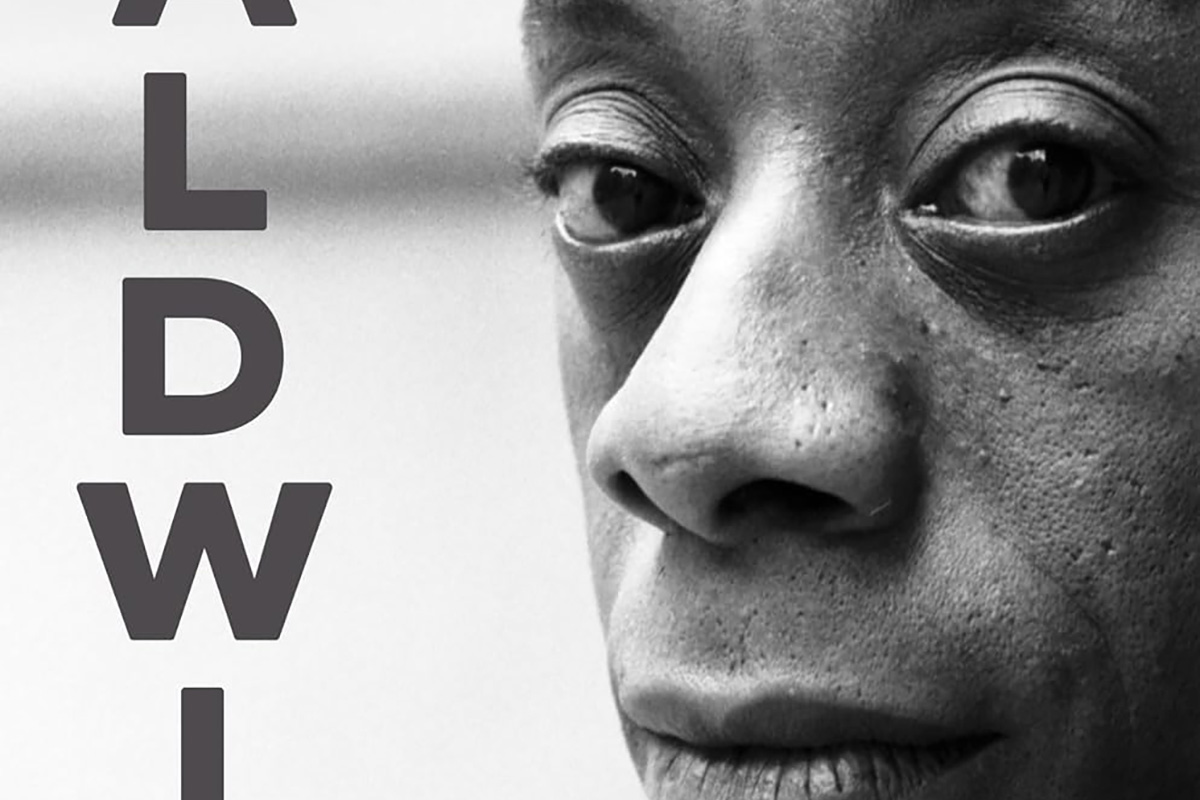
‘Baldwin: A Love Story’
By Nicholas Boggs
c.2025, FSG
$35/704 pages
“Baldwin: A Love Story” is a sympathetic biography, the first major one in 30 years, of acclaimed Black gay writer James Baldwin. Drawing on Baldwin’s fiction, essays, and letters, Nicolas Boggs, a white writer who rediscovered and co-edited a new edition of a long-lost Baldwin book, explores Baldwin’s life and work through focusing on his lovers, mentors, and inspirations.
The book begins with a quick look at Baldwin’s childhood in Harlem, and his difficult relationship with his religious, angry stepfather. Baldwin’s experience with Orilla Miller, a white teacher who encouraged the boy’s writing and took him to plays and movies, even against his father’s wishes, helped shape his life and tempered his feelings toward white people. When Baldwin later joined a church and became a child preacher, though, he felt conflicted between academic success and religious demands, even denouncing Miller at one point. In a fascinating late essay, Baldwin also described his teenage sexual relationship with a mobster, who showed him off in public.
Baldwin’s romantic life was complicated, as he preferred men who were not outwardly gay. Indeed, many would marry women and have children while also involved with Baldwin. Still, they would often remain friends and enabled Baldwin’s work. Lucien Happersberger, who met Baldwin while both were living in Paris, sent him to a Swiss village, where he wrote his first novel, “Go Tell It on the Mountain,” as well as an essay, “Stranger in the Village,” about the oddness of being the first Black person many villagers had ever seen. Baldwin met Turkish actor Engin Cezzar in New York at the Actors’ Studio; Baldwin later spent time in Istanbul with Cezzar and his wife, finishing “Another Country” and directing a controversial play about Turkish prisoners that depicted sexuality and gender.
Baldwin collaborated with French artist Yoran Cazac on a children’s book, which later vanished. Boggs writes of his excitement about coming across this book while a student at Yale and how he later interviewed Cazac and his wife while also republishing the book. Baldwin also had many tumultuous sexual relationships with young men whom he tried to mentor and shape, most of which led to drama and despair.
The book carefully examines Baldwin’s development as a writer. “Go Tell It on the Mountain” draws heavily on his early life, giving subtle signs of the main character John’s sexuality, while “Giovanni’s Room” bravely and openly shows a homosexual relationship, highly controversial at the time. “If Beale Street Could Talk” features a woman as its main character and narrator, the first time Baldwin wrote fully through a woman’s perspective. His essays feel deeply personal, even if they do not reveal everything; Lucian is the unnamed visiting friend in one who the police briefly detained along with Baldwin. He found New York too distracting to write, spending his time there with friends and family or on business. He was close friends with modernist painter Beauford Delaney, also gay, who helped Baldwin see that a Black man could thrive as an artist. Delaney would later move to France, staying near Baldwin’s home.
An epilogue has Boggs writing about encountering Baldwin’s work as one of the few white students in a majority-Black school. It helpfully reminds us that Baldwin connects to all who feel different, no matter their race, sexuality, gender, or class. A well-written, easy-flowing biography, with many excerpts from Baldwin’s writing, it shows how much of his life is revealed in his work. Let’s hope it encourages reading the work, either again or for the first time.

